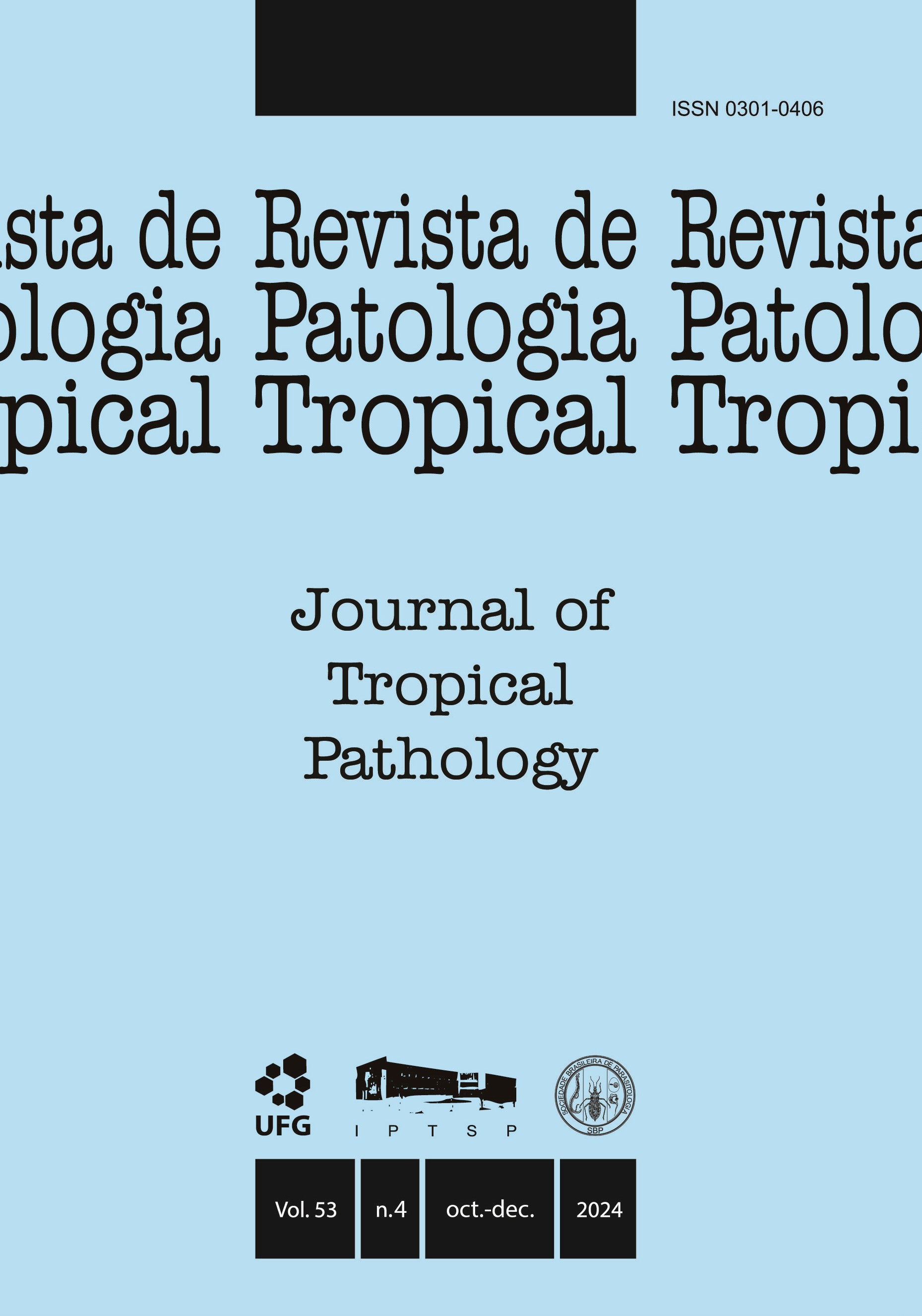Aedes aegypti and Aedes albopictus (diptera: culicidae) in artificial breeding sites in rural settlements and indigenous villages
DOI:
https://doi.org/10.5216/rpt.v53i4.78772Resumo
Aedes aegypti and Aedes albopictus are vectors for different arboviruses. Ae. aegypti is more common in urban areas, where it uses water collected within artificial receptacles to lay its eggs, Ae. albopictus is more prevalent in areas with greater vegetation cover, in which natural water bodies serve as breeding sites for the immature forms. Despite the importance of these two species in Brazil, little is currently known regarding their presence in rural settlements and indigenous villages. In this study, we describe the occurrence of the larvae and pupae of Ae. aegypti and Ae. albopictus in artificial breeding sites in rural settlements and indigenous villages located in municipalities in Mato Grosso do Sul, Brazil. Collections were carried out in seven rural settlements and two indigenous villages, mainly in 2018. At each location, different households were randomly selected and the artificial peridomestic containers were inspected for the presence of larvae and pupae. Immature forms were collected at all nine rural locations, and 64 of the 173 households were investigated (36.99%, 95% CI, 30.04–44.38). A total of 8744 specimens were collected, among which Ae. aegypti was identified as the predominant species, followed by Culex spp. Ae. albopictus, Limatus spp., and Anopheles spp. These findings can contribute to the development of more effective control strategies for Ae. aegypti and Ae. albopictus, and encourage the maintenance of active and continuous entomological surveillance in these areas, given that these mosquitoes serve as vectors in the transmission cycle of arboviruses with public health importance.
KEYWORDS: Culicidae; vector; arbovirus; control; breeding sites
Downloads
Downloads
Publicado
Como Citar
Edição
Seção
Licença
The manuscript submission must be accompanied by a letter signed by all authors stating their full name and email address, confirming that the manuscript or part of it has not been published or is under consideration for publication elsewhere, and agreeing to transfer copyright in all media and formats for Journal of Tropical Pathology.

